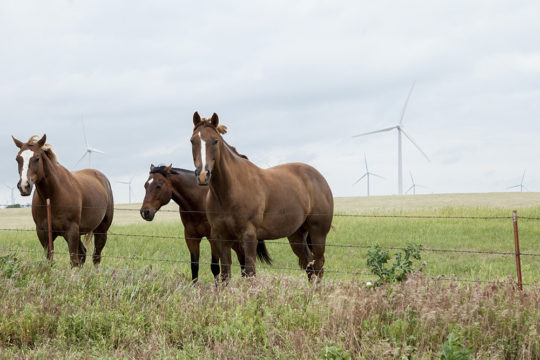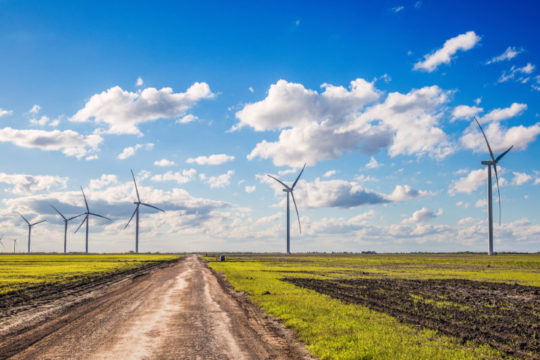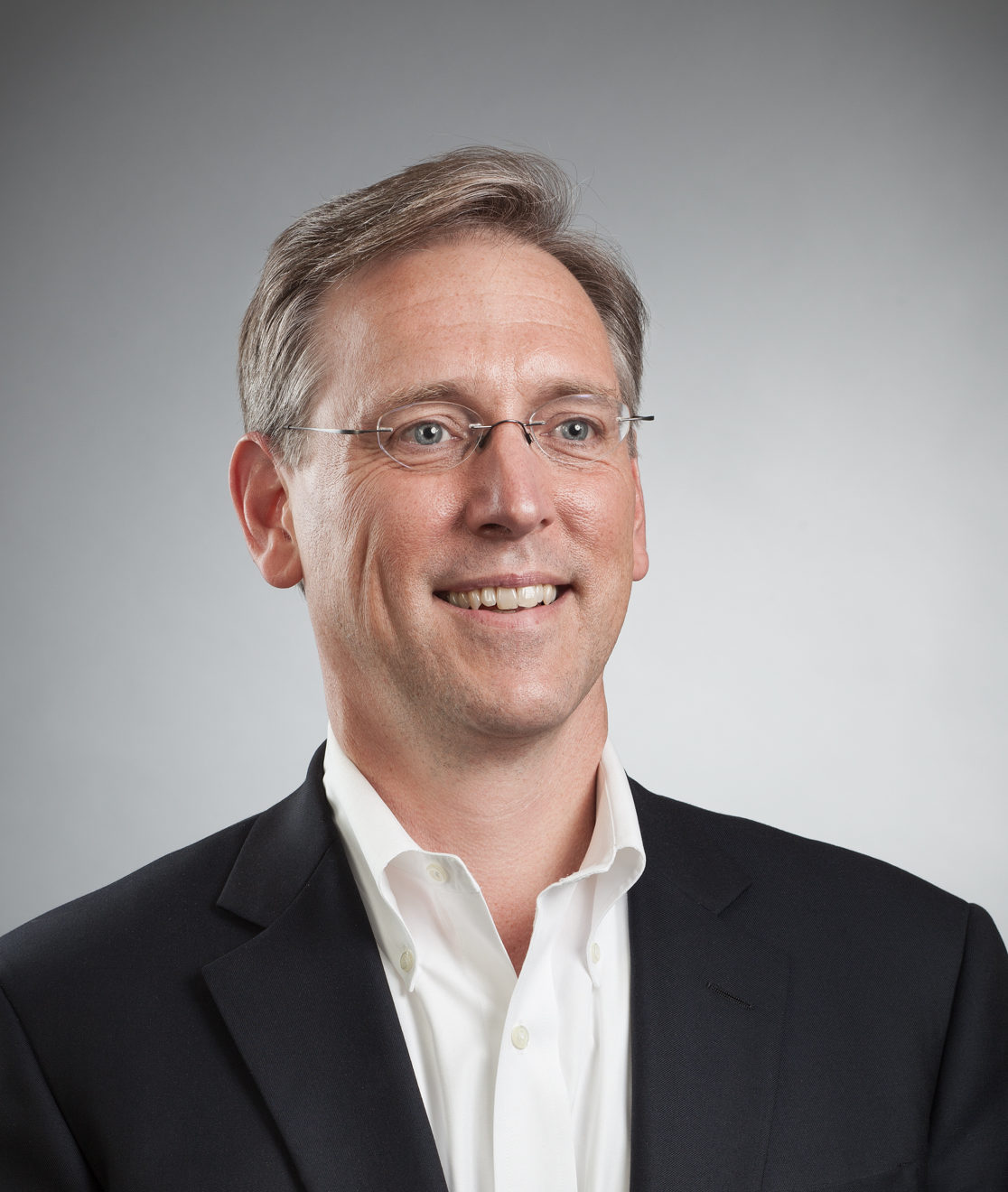The Prospects for Wind in 2017
An Interview with Sandy Reisky
This article originally appeared in A Word About Wind, a UK-based publication focused on the European and global finance market for wind energy.
The day the world has been waiting for is almost here. Next Friday, Donald Trump is due to be inaugurated as the 45th president of the United States of America. It still doesn’t quite feel real.
His election victory last November caused some understandable concern in the wind sector. Trump is a long-standing critic of the wind industry and his rise to the position of ‘leader of the free world’ means he could make life very difficult for the sector, with his energy policies which include scrapping Barack Obama’s Clean Power Plan.
But Sandy Reisky, founder and chairman of US developer Apex Clean Energy, says the prospects for the industry are still strong. Firms must just tell the right story: they should focus on the benefits to the economy and jobs, rather than carbon emissions.
“More than 80% of US wind projects are in districts represented by Republicans in the House of Representatives, and the local and regional economic benefits of wind are clear… With the favourable cost of energy and compelling value proposition of renewables, we are confident that our industry will continue to grow,” he says.
Wind capacity in the US has tripled to over 75GW since the financial crisis of 2008, and Apex is one of the players behind this growth. Founded in 2009, the company builds wind farms on behalf of utilities and investors; and in 2015 completed wind schemes in the US with total capacity of 1GW. This made it the largest developer in the US market by completed capacity that year. It also has a 12GW project pipeline.
In this interview, Reisky tells A Word About Wind how the company has grown from a start-up to one of North America’s largest wind developers in the last seven years. He also discusses the prospects for US wind under Trump; changes on the financial side of the sector; and how he became a serial renewables entrepreneur.
Vital statistics
Name: Sandy Reisky
Born: 1966 in Charlottesville, Virginia, US
Educated: University of Virginia; McIntire School of Commerce
Lives: Charlottesville
Career: Before coming into renewables, Reisky worked as a financial analyst at Klöckner Capital Corporation and as chief financial officer at a software firm. In 2000, he decided to enter the clean power sector and set up Greenlight Energy, which he sold to BP in 2006. He also founded wave power technology firm Columbia Power Technologies in 2005; Greenlight Biofuels in 2006; solar firm Axio Power in 2007; and Apex Clean Energy in 2009.
Personal interests: Family, fishing, outdoors, writing, hiking
Reisky Business
Reisky grew up in Charlottesville in the US state of Virginia before studying business at the University of Virginia, including a summer interning in Munich in Germany.
He then worked as a financial analyst in the US arm of German firm Klöckner Capital Corporation, and as chief financial officer at a software company; and, during the 1990s, spent three years working in Munich and two years in the Czech Republic. It was in the Czech Republic that he committed to get involved in clean energy.
“Eastern Europe, especially back in the late 1990s, was very polluted and I made a decision – although I didn’t act on it for a number of years – that I could pivot my career and get involved in somehow making an impact to get cleaner air and cleaner water,” he says. It was in 2000 when finally decided to act on it.
Specifically, it was 22 April 2000, when Reisky was in Washington DC and the city was hosting events for Earth Day. He visited the city’s National Mall for an event to mark the 30th anniversary of the US Government’s 1970 Clean Air Act, and looked at a series of booths by environmental non-profits and clean energy companies.
During this he learnt that utility-scale wind was already cost-competitive with fossil fuels in some US states. This inspired him to set up wind developer Greenlight Energy.
“We took a view that wind power was becoming cost-competitive, and that it was going to take a large piece of market share in the coming decades,” says Reisky. The company then spent a few years raising capital from investors, including local investors and family offices, to invest in developing wind farms.
“Are we just building and flipping companies? Absolutely not. Apex is the first company where we’ve been in a position to carry these projects.”
By 2004, Greenlight had completed a 150MW scheme; and, by 2006, has completed facilities with total headline capacity of 450MW, which represented investment of $750m. He eventually sold Greenlight to BP in August 2006 for around $98m.
After this, due to a three-year non-compete clause, Reisky branched out of wind by launching businesses including solar developer Axio Power. The firm built a 500MW project pipeline in the US and Ontario in Canada before it was bought out in 2011 by SunEdison. “The joke question is ‘Did you get paid?’” he says. “The answer is ‘yes’.”
Reisky also stayed involved in two Greenlight spin-offs that he launched before the sale to BP, and were not part of that sale. These are wave technology specialist Columbia Power Technologies, which was set up in 2005; and Greenlight Biofuels, launched in 2006. When the BP non-compete clause ended in 2009, he set up Apex with colleagues from Greenlight, including chief financial officer Jim Trousdale.
The firm has secured financial backing from outside investors including Prudential Capital Group, which invested $80m in two tranches last year.

Financial Crisis
In theory, setting up in 2009 was a bad time. The US was in the grip of the worst global financial crisis since the Great Depression of the late 1920s and 1930s. “We launched when the financial crisis was really raging,” he says. This gave Apex the opportunity to acquire projects from developers without the capital needed to start construction; or who were otherwise struggling financially. Over the last seven years, the company has completed 28 acquisitions with close to 100 projects, while also originating and developing its own schemes on previously undeveloped sites.
The company now has seven operating wind farms with total capacity of over 1.6GW, of which it operates five totalling 1GW for clients on a turn-key basis. It has another 613MW under construction in Texas and Oklahoma; and others in its 12GW portfolio are ready to build. It has a team of more than 220 people, and founding the firm in a financial crisis also gave Reisky a good chance to build a strong team.
“With regards to start-ups, being able to bring in people who are domain experts to help you build your business is key. It’s really about teamwork. I’ve found my role has always been to chart a course and say, ‘Here’s what we’re trying to achieve’ and explain why; and do a lot more of the strategic stuff like raising capital,” he says.
But Reisky is not looking to sell Apex in the same way he did with Greenlight or Axio.[/vc_column_text][vc_column_text]“You might say: ‘Are they just building and flipping companies?’ Absolutely not,” he says. “Apex is the first company where we’ve been in a position to carry these projects. We have the people, we have the capital, and it’s the first time we’re really been in a position to execute in the market the way I believe you need to.”
Reisky says that Apex’s approach is to develop projects in a way that de-risks them for institutional investors and utilities.
It does this by investing its own capital during the development stage. It then sells a majority stake in the development either when construction work is due to start; or it secures an agreement with a partner when the construction is due to start but the final sale concludes when that work completes. It is an approach that means Apex takes on the risk in development and construction; and has resulted in $3.5bn of transactions for projects with total capacity of 2.2GW.

Apex would either sell the project outright, or sell a majority stake so it could retain a minority stake. Reisky says he prefers to do the latter approach, particularly if Apex is retained to manage the scheme during its operational phase. It now manages over 1GW of operational wind projects, and employs 25 people in its operations centre. He adds that the firm may also consider working with a development partner to build a project and selling it when it becomes operational, but that this is not the plan now.
Its regular partners include utility Southern Power, to which it has sold three projects including the 147MW Grant Plains in Oklahoma in August; Ikea, which purchased a 165MW scheme in Texas in 2014; and tax equity investors including MidAmerican Energy. In total, Reisky estimates that Apex has done $1bn of tax equity deals.
“PPAs are getting a lot of wind built and opening up a new channel of ways to get to market, which is very important.”
Routes to Market
For Reisky, one of the biggest changes in US wind since he set up Apex in 2009 is the increasing number of ways to fund schemes. Back then, the only routes for Apex to take projects to market was by working with a major investors or utilities. Developers can now make schemes financially viable by signing power purchase agreements with corporate energy buyers, of which over 2GW were agreed in the US wind sector last year; and a further 9.9GW could be done by 2025, according to a forecast from Bloomberg New Energy Finance in November 2016. He says: “It’s getting a lot of wind built and opening up a new channel of ways to get to market, which is very important.”
Apex was also an early adopter of ‘proxy revenue swaps’, a risk management tool for the wind industry that was developed by Allianz Risk Transfer, Altenex, Nephilia and Resurety. A proxy revenue swap is effectively an insurance product that gives a wind farm’s owner a guaranteed fee for the electricity output from their project, which protects them when winds are slow and helps them to attract risk-averse investors. Apex executed a ten-year deal on the 151MW Old Settler project in Texas in July.
These methods of funding projects should all help to support Apex’s growth. Reisky says the company will remain focused on growing by using its current strategy, and by continuing to focus on US onshore. He says the US has an “abundance” of strong energy resources; a stable business environment; a reliable transmission grid; and a well-developed financial, legal and regulatory network – even with Trump in charge.
The five-year extension of the wind production tax credit in December 2015, taking it through to the end of 2019, has been a great support too. Apex is not looking to grow outside of the US as it sees a “large and attractive opportunity” in its home market; and does not want to take on the risks of building or partnering overseas. “There’s huge potential for steady growth year-on-year,” he says. “The predictions are for 10GW-plus of wind a year, and solar’s doing even better. They’re on track to have a great year, and… both wind and solar keep getting cheaper.”
Reisky says that, as wind farms get cheaper to build, this is a benefit for Apex as it means that “a portfolio of development-stage projects is, essentially, deeper in the money over a time, and so a large portfolio becomes of more value… as wind power gets more competitive”. For Apex, with its 12GW pipeline, this is a major benefit.
The desire to minimise risk is also a key reason why Apex is steering clear of the nascent US offshore market, where it is difficult to secure permits and would have to develop in partnership: “We looked at that for a long time and we disengaged when we felt it didn’t seem to be moving forward. In future, we may look at it if we were to partner. We’d want to partner with a larger player because of the scale.”
For now, Reisky sees the greatest opportunity for Apex in US onshore, and that is where he wants to focus. Only a full assault on wind by Trump could change that.
